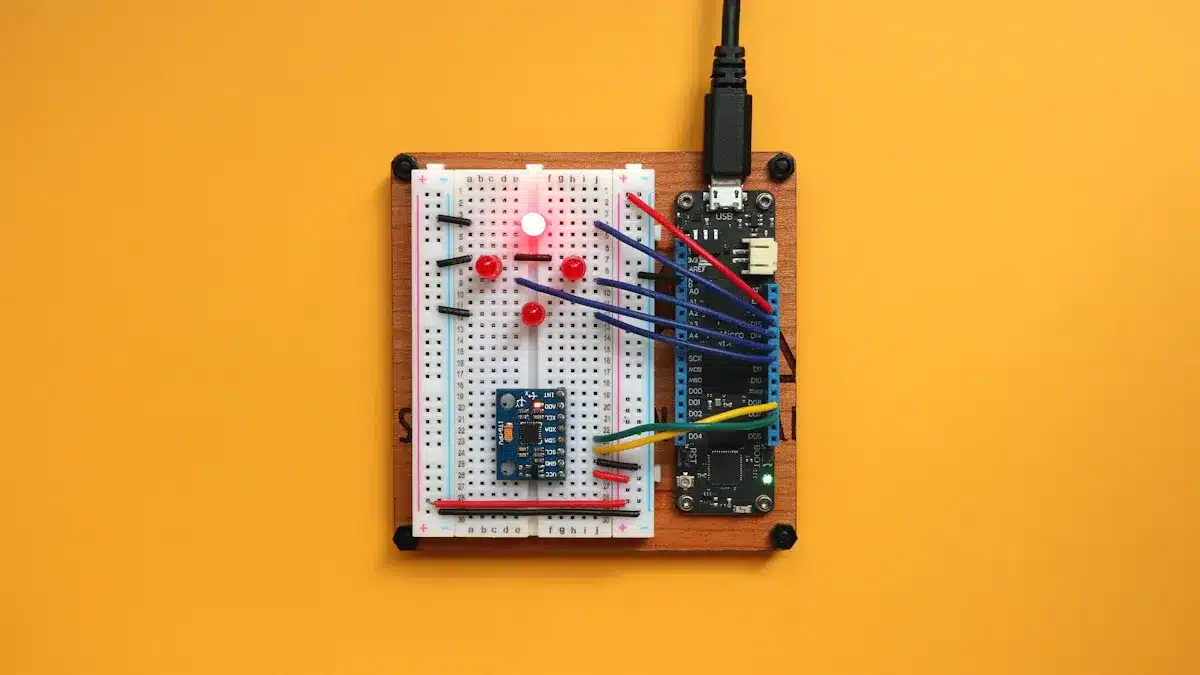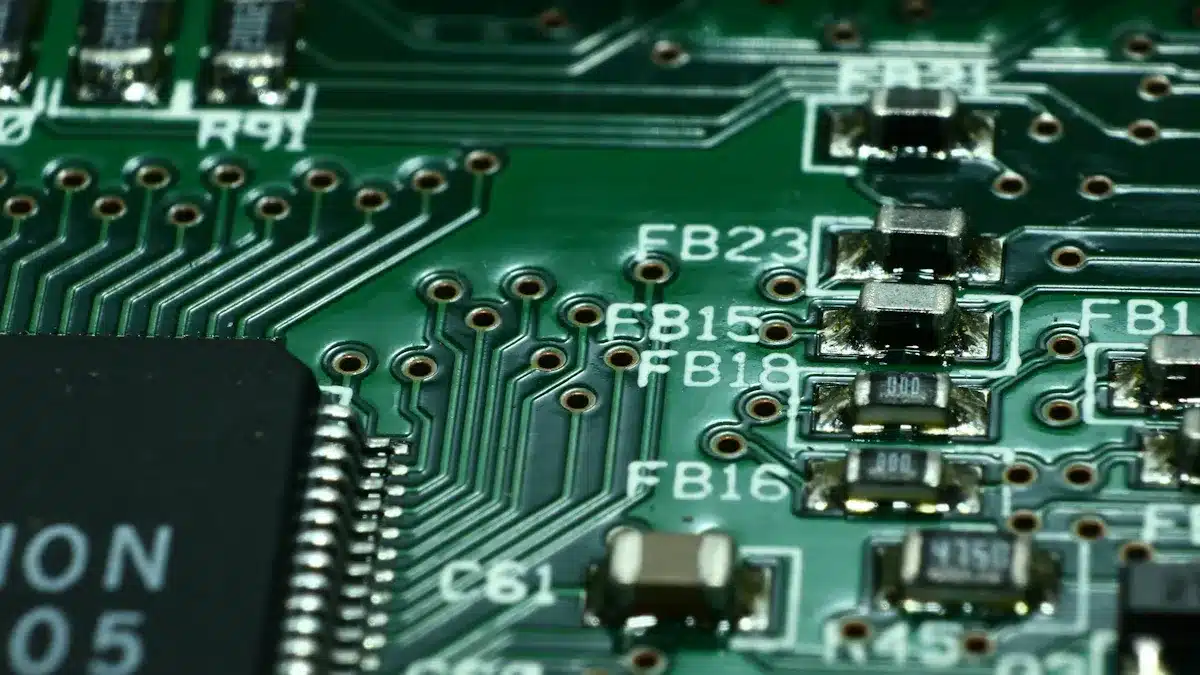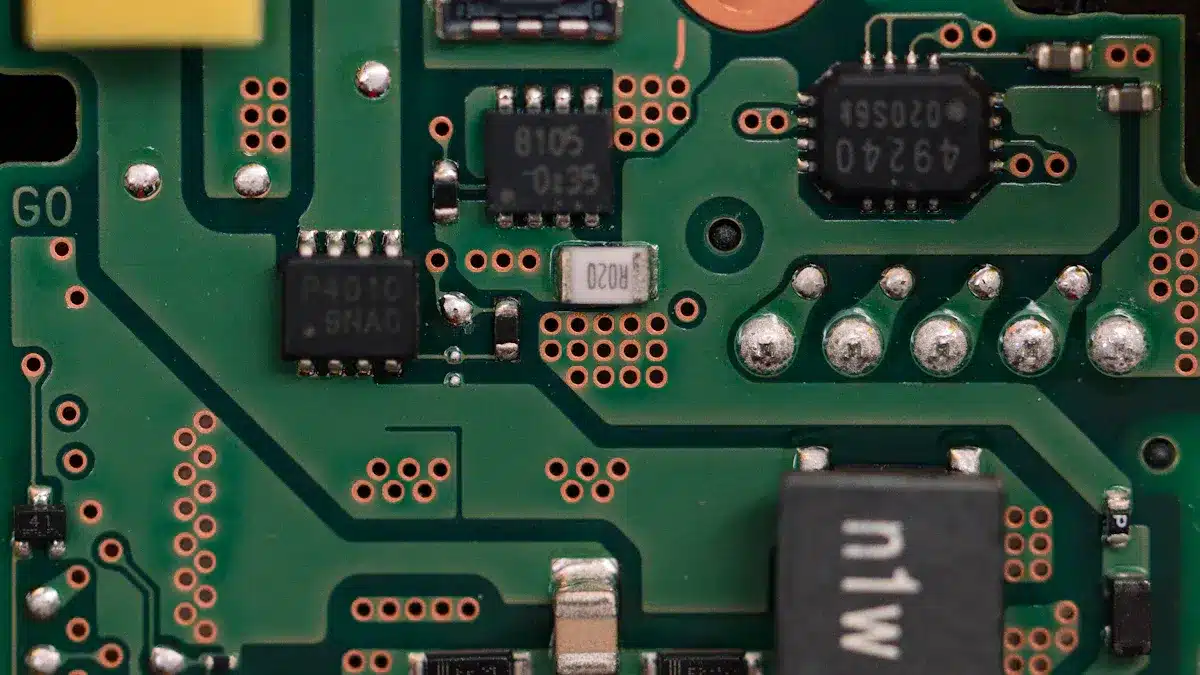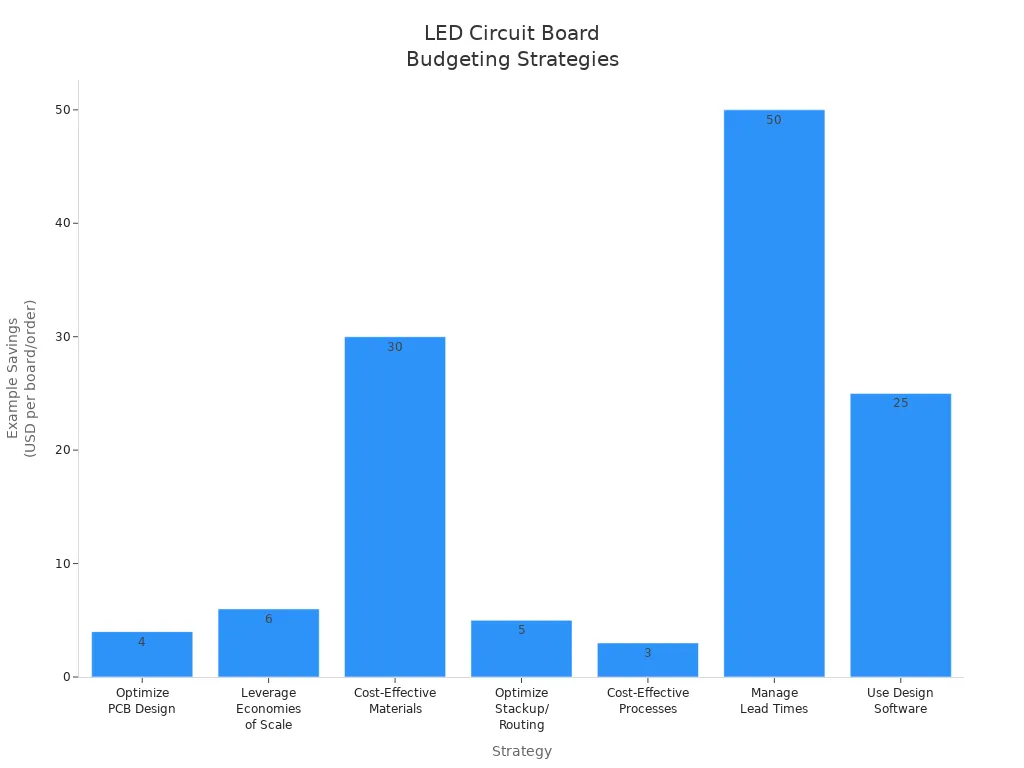
The LED circuit board market is doing well. It is worth about $2 billion now. This growth comes from more people wanting LEDs. Many areas are using them, like electronics, cars, and factories. You can see important trends in this market. More people are using LEDs. There are also new designs for circuit boards. Plus, the need for energy-saving and smart lights is pushing new ideas. Knowing these changes helps you choose the best LED circuit board for what you need.
Key Takeaways
First, know what you need before picking an LED circuit board. Think about how you will use it and the environment to make a smart choice.
Pick the best materials for your LED circuit board. Aluminum helps with heat, and FR4 is cheaper for low-power uses.
Choose a trusted maker with the right certifications. This guarantees quality and dependability in your LED circuit board production.
Plan your budget carefully for LED circuit boards. Think about long-term savings from energy use and how long they last, not just the first costs.
Use prototyping to test designs before making a lot. This helps find problems early and makes sure the final product meets your needs.
Identify Your Needs
When you choose an LED circuit board, first know what you need. Understanding how you will use it and the environment helps you make a good choice.
Application Types
Different uses need different LED circuit boards. Here are some common uses and the types of PCBs they need:
Application Type | PCB Type | Reason for Choice |
|---|---|---|
Automotive | Aluminum PCB | Works well in high heat situations |
Architectural Lighting | Flexible PCB | Fits unique shapes and allows for design changes |
For example, cars often use aluminum PCBs for brake lights. These boards last long and save money. Flexible PCBs work best for architectural lighting because they can fit many designs.
Environmental Factors
The environment can affect how well LED circuit boards work and how long they last. Think about these factors:
High humidity can cause metal parts to rust, which lowers conductivity and can cause problems.
Changes in temperature can make materials expand and shrink, leading to wear and tear.
Being in high heat for too long can speed up aging, which harms electrical performance.
To keep things running well, follow good environmental practices. For outdoor or industrial areas, use these tips:
Recommendation | Details |
|---|---|
Humidity Control | Keep humidity between 10% and 85% RH; use a dehumidifier if it goes above 90% RH. |
Daily Operation | Turn on the LED display for at least 2 hours each day. |
Cleaning | Clean regularly to stop dust from building up and affecting heat loss. |
Storage | Keep in a dry place with dehumidifiers; don’t leave outside when not in use. |
Waterproof Standards | Use displays that meet IP68 standards for rain and water protection. |
By knowing your application needs and environmental factors, you can choose the right LED circuit board that works for you.
Key Specifications for LED Circuit Boards

When you design an LED PCB, you need to think about some important specifications. These specifications help your circuit board work well and fit your needs.
Voltage and Current Ratings
Knowing voltage and current ratings is very important for picking the right LED circuit board. Here are some key points to remember:
Common Voltage Ratings: Most LED drivers work at either 12VDC or 24VDC. These ratings are normal in many lighting uses.
LED Voltage Requirements: The usual voltage needed for LEDs is between 1.8 to 3.3 Volts. This depends on the color of the LED. This range is important to make sure your LEDs work right without getting damaged.
You should figure out the total power use based on how many LEDs you have and how efficient they are. This helps you find the right voltage and current ratings for your needs.
PCB Material Choices
The type of PCB material you choose affects how well your LED circuit board works and how long it lasts. Here are some common materials and what they are like:
Material | |
|---|---|
FR4 | 0.25 |
Aluminum | 237 |
Thermal Management: Aluminum can move heat away much better than FR4. This makes aluminum PCBs great for high heat uses like LED lighting.
Coefficient of Thermal Expansion (CTE): Aluminum has a CTE of 23 ppm/°C, while FR4 has a CTE of 14 to 17 ppm/°C. A good match in CTE helps reduce stress from heat, making your LED PCB more reliable.
Also, aluminum does not catch fire easily, which is very important for safety. This means you don’t need extra flame-proof materials, making it safer for industries like cars and airplanes.
When you design an LED PCB, think about these important specifications:
Power Requirements: Figure out total power use based on the number of LEDs and how efficient they are.
Heat Dissipation: Use methods like copper planes or metal core PCBs to manage heat well.
Driver or Controller: Pick the right controlling part based on what features you need.
LED Characteristics: Think about the type of LED (monochromatic, RGB) and things like cost, size, and reliability.
Environmental Considerations: Change the PCB design to handle extreme temperatures, humidity, chemicals, and UV light.
By knowing these specifications, you can make smart choices when designing an LED PCB that fits your needs.
Quality and Reliability in LED PCB Design

When you make an LED PCB, quality and reliability are very important. The materials you pick and the manufacturer’s reputation can greatly affect how well your circuit board works and how long it lasts.
Material Quality
The quality of the materials in your LED circuit board affects how well it works and how long it lasts. Here are some common materials and their benefits:
Material Type | Advantages |
|---|---|
Aluminum | Great at moving heat, cost-effective, helps LED chips last longer, good for high-power uses. |
Copper | Better at moving heat than aluminum, perfect for high-power LEDs like car headlights. |
FR-4 | Light, cheap, good for low-power lighting with little heat. |
Ceramic | Used for special cases like photography and pool lights. |
Hybrid | Mixes different materials for better flexibility and performance. |
Flexible | Made from polyimide or polyester, allows for many lamp designs, good for decorative uses. |
When comparing materials, think about how well they move heat, their dielectric properties, and how easy they are to make. For example, aluminum moves heat well at about 200 W/mK. Copper is even better at around 400 W/mK, making it great for high-power uses. Choosing good materials helps your LED PCB work better and last longer.
Manufacturer Reputation
The reputation of your PCB manufacturer is key to making sure your product is reliable. A good manufacturer usually follows strict quality checks. Here are some important points to think about:
Manufacturers that focus on quality are more likely to meet customer needs.
A trustworthy PCB manufacturer keeps high-quality standards and certifications, which are important for reliability.
Following IPC standards helps improve product value and consistency, which is essential for reliability.
Certifications and standards matter too. Look for manufacturers that follow industry standards like UL (Underwriters Laboratories) and IEC (International Electrotechnical Commission). These certifications ensure safety, energy efficiency, and that they follow local rules.
Here are some important certifications for LED circuit boards:
UL (Underwriters Laboratories): Ensures safety, EMC, and energy efficiency for LED drivers in North America.
IEC (International Electrotechnical Commission): Covers European standards, including safety and EMC for LED drivers.
IPC-6012B: Sets rules for rigid PCBs, focusing on strength and soldering quality.
By choosing a manufacturer with a good reputation and the right certifications, you can make your LED PCB assembly more reliable. This choice leads to better performance and happier customers.
Cost Considerations for LED Circuit Boards
When you pick an LED circuit board, cost is very important. You need to plan your budget well to get the best value for your money. Knowing the costs of different types of LED PCBs can help you make smart choices.
Budgeting for LED Circuit Boards
Budgeting for LED circuit boards includes several things. Here are some tips to think about:
Strategy | Cost Savings Potential | Example Savings | Implementation Tip |
|---|---|---|---|
Optimize PCB Design | 10-30% per board | $4/board | Use design software for routing |
Leverage Economies of Scale | $1-$5/board | $6/board | Combine orders, panelize designs |
$5-$40/sq. ft. | $30/board | Check performance needs early | |
Optimize Stackup/Routing | 15-25% per board | $5/board | Work with manufacturers |
Cost-Effective Processes | $1-$5/board | $3/board | Skip unnecessary advanced processes |
By using these tips, you can lower costs while keeping quality high.
Long-term Cost vs. Initial Investment
When you look at the long-term costs of LED circuit boards, you often see they are better than traditional options. Here’s a comparison:
Aspect | LED Circuit Boards | Traditional Alternatives |
|---|---|---|
$5,000 – $50,000 | Higher initial costs | |
Energy Consumption | Uses up to 70% less power | Higher energy costs |
Lifespan | Up to 100,000 hours | Much shorter lifespan |
Maintenance Requirements | Minimal maintenance | Frequent repairs needed |
Annual Operational Cost | $4.20 per sign | $140 savings per unit per year |
Buying high-quality LED circuit boards may seem expensive at first, but their low power consumption and long-lasting nature lead to big savings over time. You can expect lower maintenance costs and smaller energy bills, making them an easy to integrate choice for many uses.

Final Tips for Selecting an LED PCB
Expert Advice
When you choose an LED PCB, getting expert advice is important. This helps you make smart choices. Here are some key tips to think about:
Understand Your LED PCB Requirements: Know what you need for your LED PCB. This includes size, shape, layer count, thermal management, and electrical specs.
Assess Manufacturing Experience and Expertise: Look into possible manufacturers. Check how much experience they have in making LED boards.
Evaluate Manufacturing Facilities: Visit the factories of potential manufacturers. Make sure they meet quality standards.
Check for Certifications: Confirm that the manufacturer has the right certifications for making LED PCBs.
Customization Capabilities: Talk about customization options with the manufacturer to fit your needs.
Prototyping and Testing Services: Ask about the manufacturer’s prototyping and testing services. This helps find design problems early.
Quality Control Processes: Look into the manufacturer’s quality control steps to ensure reliability.
Cost Considerations: Get detailed cost estimates from different manufacturers to find the best deal.
Lead Times and Production Schedules: Talk about lead times and production schedules to match your project timeline.
Scalability and Capacity: Think about how your project can grow and future production needs.
Communication and Collaboration: Stress the need for clear communication with the manufacturer.
References and Reviews: Ask for references from the manufacturer and contact past clients for their feedback.
Prototyping
Prototyping is very important in making LED PCBs. It lets you test designs before making a lot of them. Here are some benefits of prototyping:
Benefit | Description |
|---|---|
Risk mitigation | Fix problems like overheating or bad solder joints before scaling up. |
Performance verification | Make sure the strip meets brightness, color, and lifespan standards. |
Client approval | Prototypes help clients see the final product and ask for changes. |
By testing prototypes, you can find design mistakes early and avoid making faulty products. This process also lets you test many designs quickly and cheaply. Adding test pads to the PCB design makes testing easier. These pads give easy access for checking electrical signals, ensuring thorough checks of circuit function during production testing.
Picking the right LED circuit board is very important for your project to succeed. Here are some important things to think about:
Thermal management is key to making sure your circuit board works well.
Material choice affects how well it performs and how long it lasts.
Choosing a reliable manufacturer ensures good quality and dependability.
By remembering these points, you can make smart choices that help your LED projects turn out better. Happy designing! 🌟
FAQ
What is an LED circuit board?
An LED circuit board is a base that holds and connects LED parts. It creates paths for power and signals. There are different types, like aluminum LED PCB, FR4 LED PCB, and flexible LED PCB. Each type works best for different uses.
How do I choose the right PCB material?
Choosing the right PCB material depends on what you need. For high heat, use aluminum LED PCB. If you need something flexible, go for flexible LED PCB. If you want a cheaper option, FR4 LED PCB is a smart choice.
Are LED circuit boards dust and moisture resistant?
Many LED circuit boards are made to resist dust and moisture. Look for boards with protective coatings or ones that have IP ratings. This helps them last longer in tough conditions, making your LEDs last more time.
What are multilayer LED PCBs?
Multilayer LED PCBs have many layers of circuits. They help create smaller designs and better performance. These boards are great for complex uses where space is tight. They also provide better heat management and electrical efficiency.
How can I ensure my LED circuit board lasts longer?
To make your LED circuit board last longer, focus on managing heat and using good materials. Use aluminum LED PCB to help with heat. Regular cleaning to remove dust and moisture also helps keep it working well and makes it last longer.
See Also
Key Guidelines for Selecting the Ideal PCBA Main Board
Best Advice for Finding the Perfect Main PCBA
Crucial Advice for Selecting a Quality PCBA Manufacturer